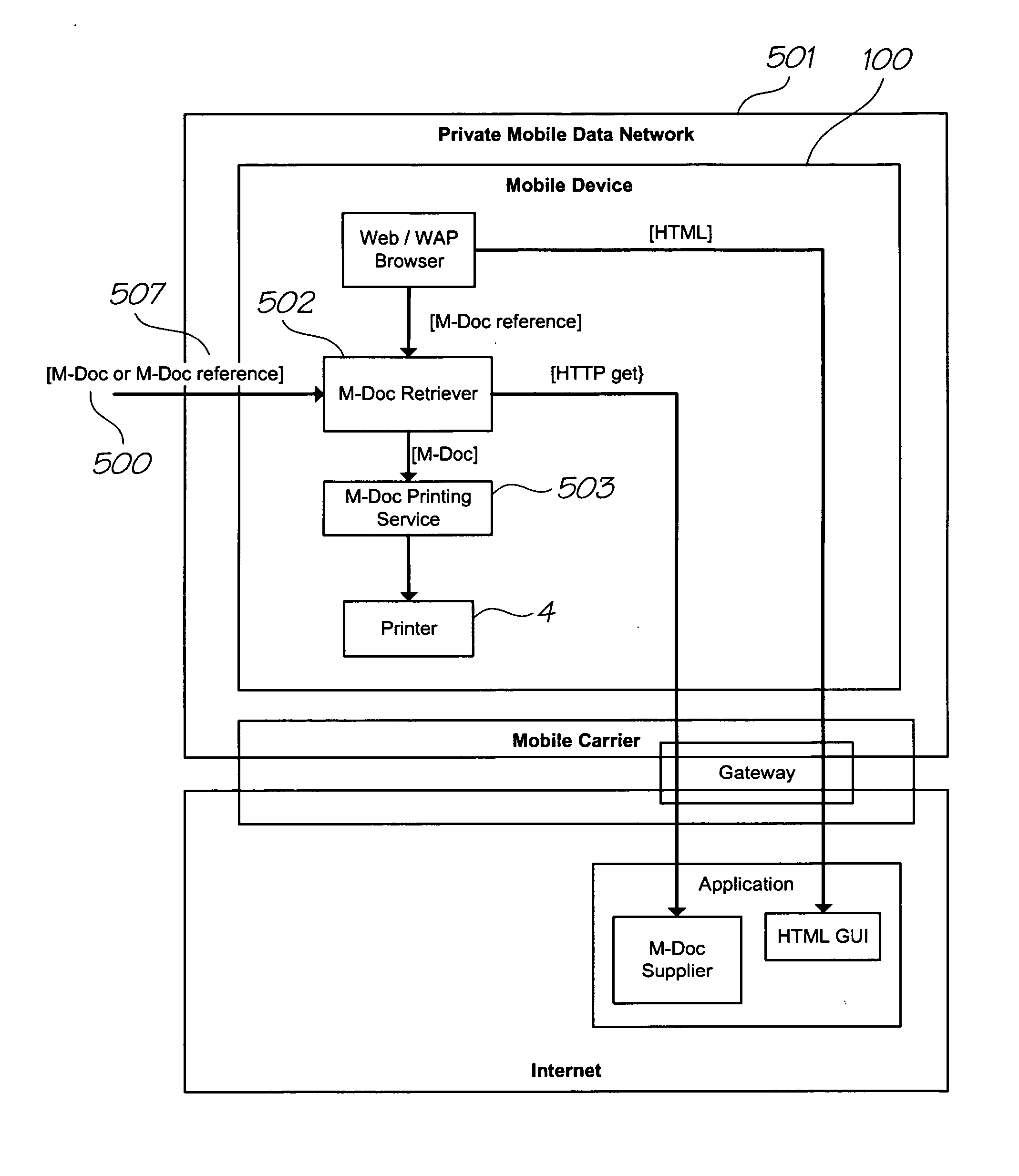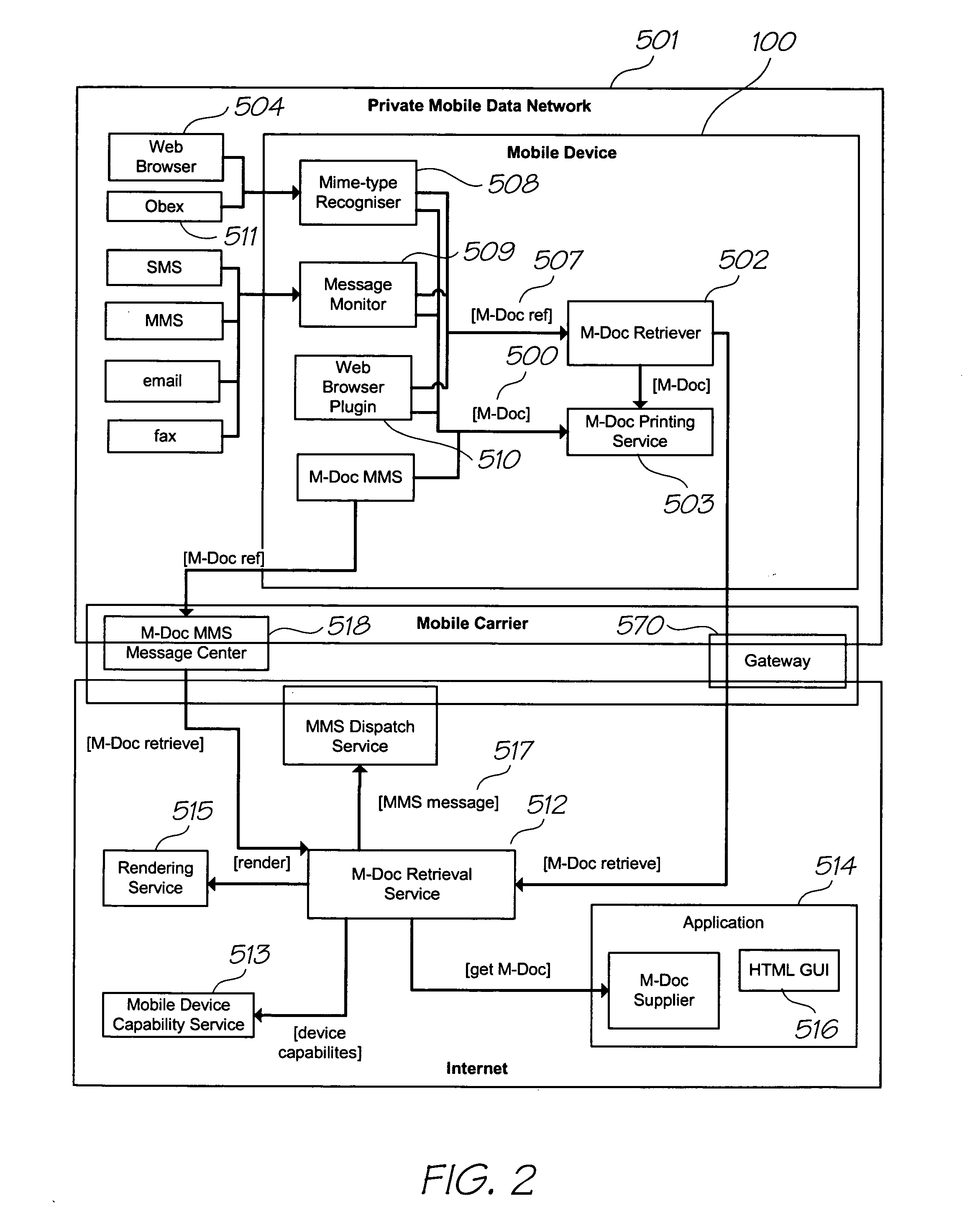Printing educational material using a mobile device
a mobile device and printing technology, applied in printing, computers with plug-ins, instruments, etc., can solve the problem of not operating at a sufficiently high rate to capture motion
- Summary
- Abstract
- Description
- Claims
- Application Information
AI Technical Summary
Benefits of technology
Problems solved by technology
Method used
Image
Examples
Embodiment Construction
[0160] The following modes, given by way of example only, are described in order to provide a more precise understanding of the subject matter of a preferred embodiment or embodiments. In the figures, incorporated to illustrate features of an example embodiment, like reference numerals are used to identify like parts throughout the figures.
1.0 Printing Internet Based Content Product Architecture
[0161] An example of a M-Print print media is the size of a business card. In general, documents or web based materials that have been designed for display on a desktop monitor or to be printed on A4 or Letter paper and may not print well on such sized media. If the content is reduced for the business card media then the content may be too small for easy reading. If multiple pages of media are used to print a page then the user is required to assemble the pages in the correct order before the printout is meaningful. To have presentable, effective content on a business card sized media the ...
PUM
 Login to View More
Login to View More Abstract
Description
Claims
Application Information
 Login to View More
Login to View More - R&D
- Intellectual Property
- Life Sciences
- Materials
- Tech Scout
- Unparalleled Data Quality
- Higher Quality Content
- 60% Fewer Hallucinations
Browse by: Latest US Patents, China's latest patents, Technical Efficacy Thesaurus, Application Domain, Technology Topic, Popular Technical Reports.
© 2025 PatSnap. All rights reserved.Legal|Privacy policy|Modern Slavery Act Transparency Statement|Sitemap|About US| Contact US: help@patsnap.com



